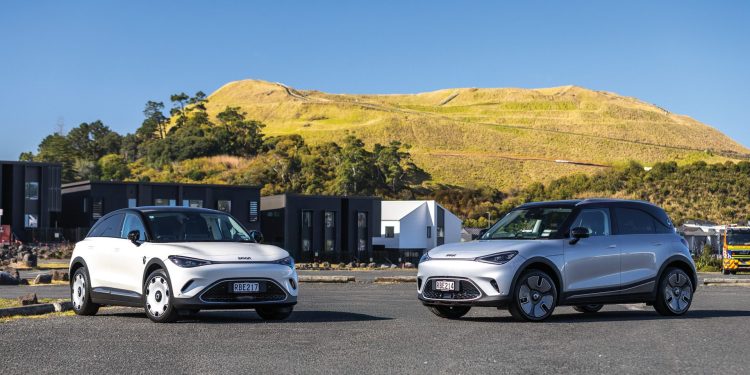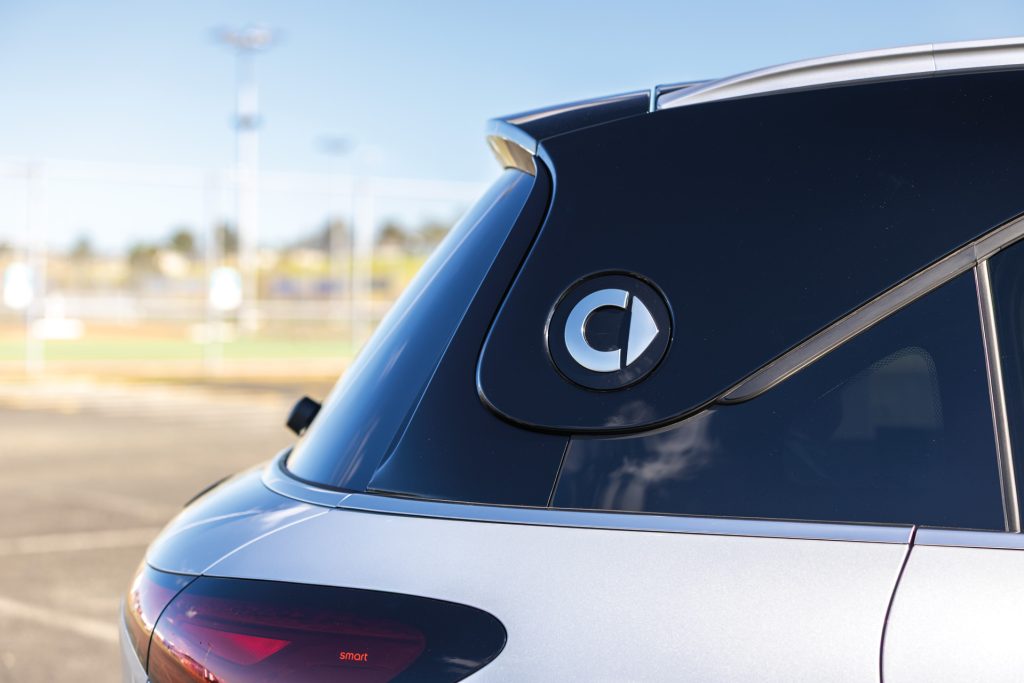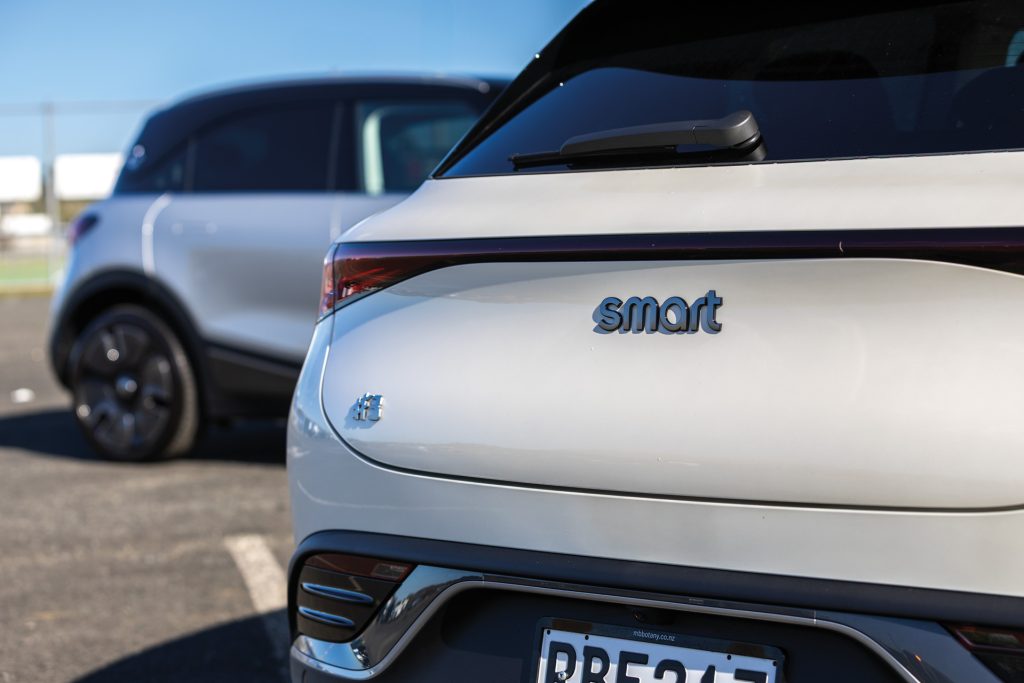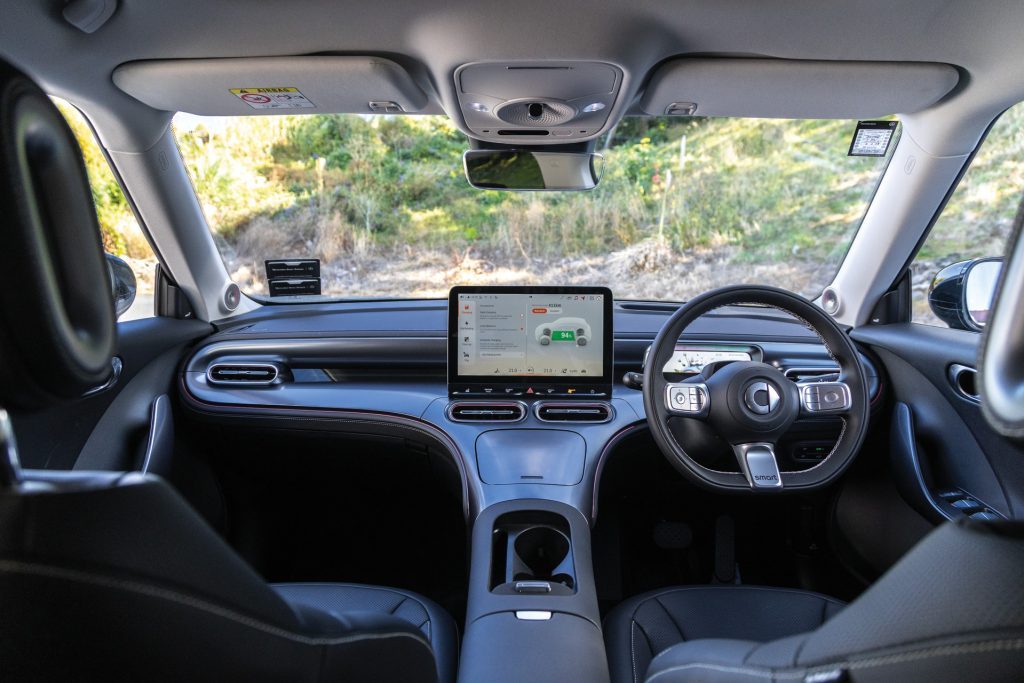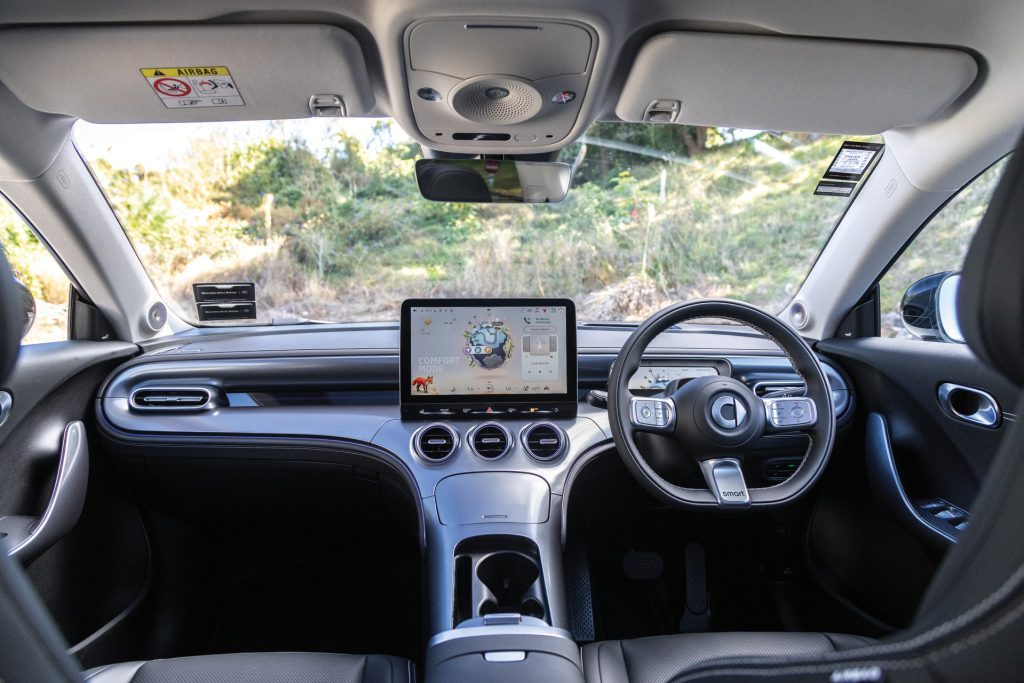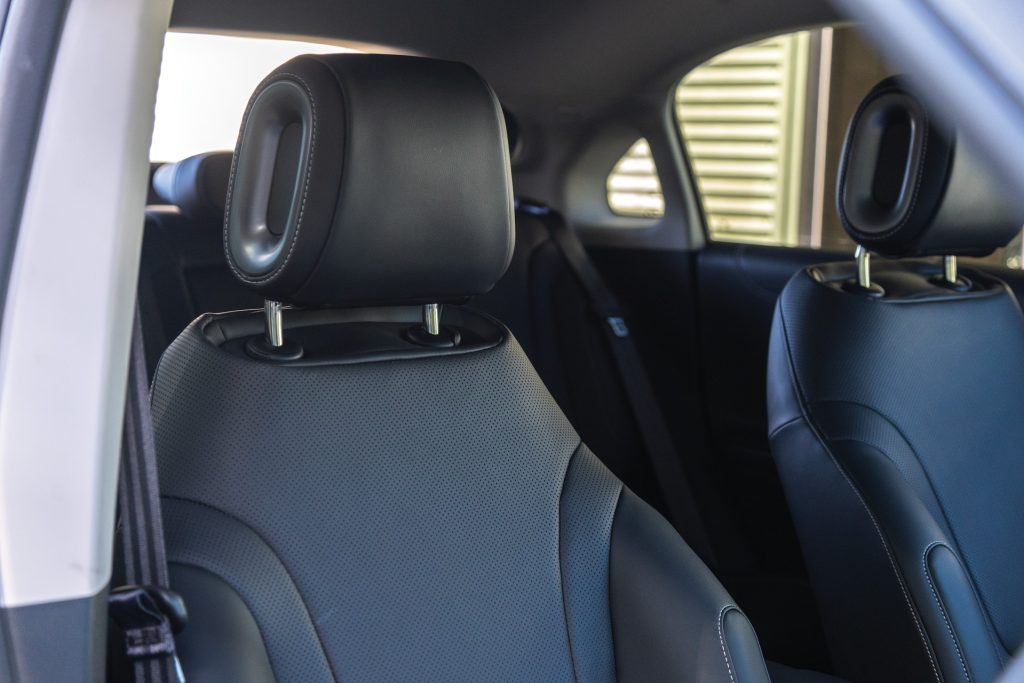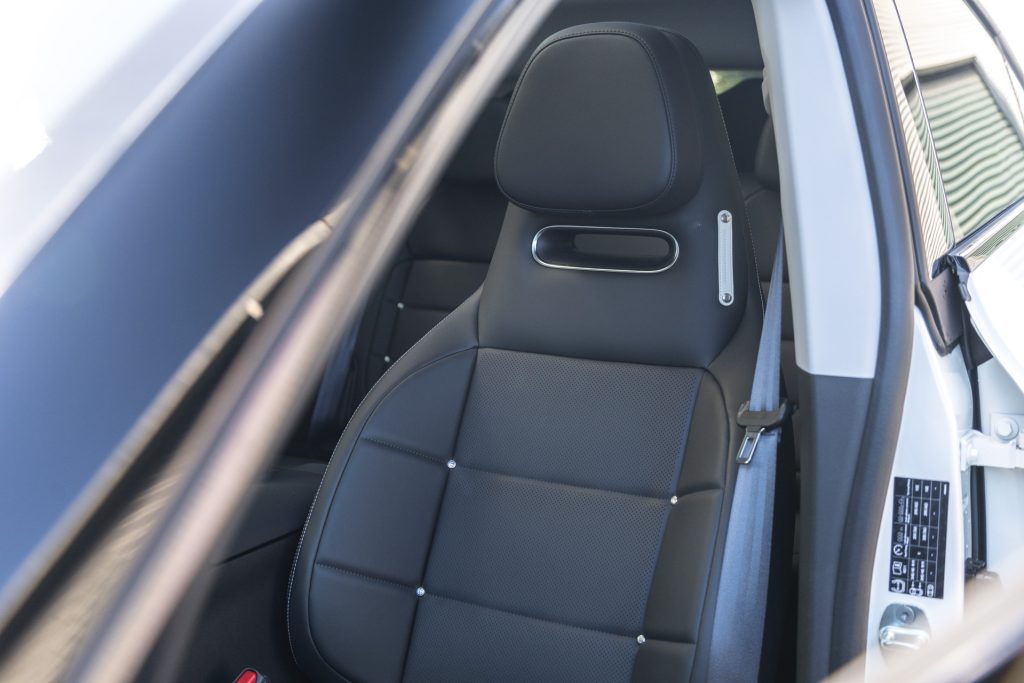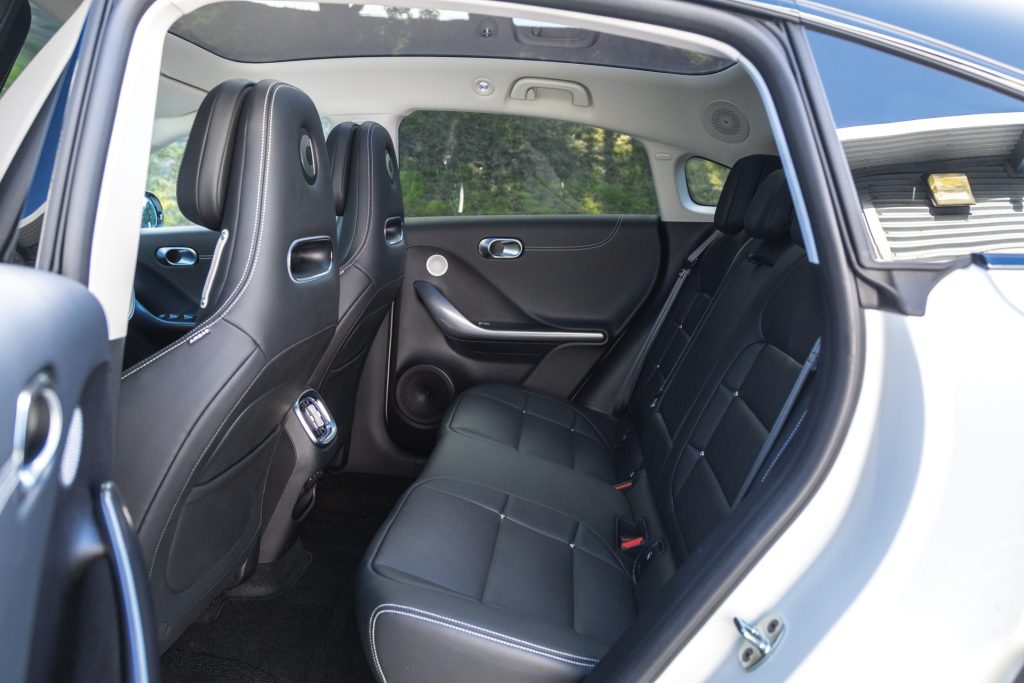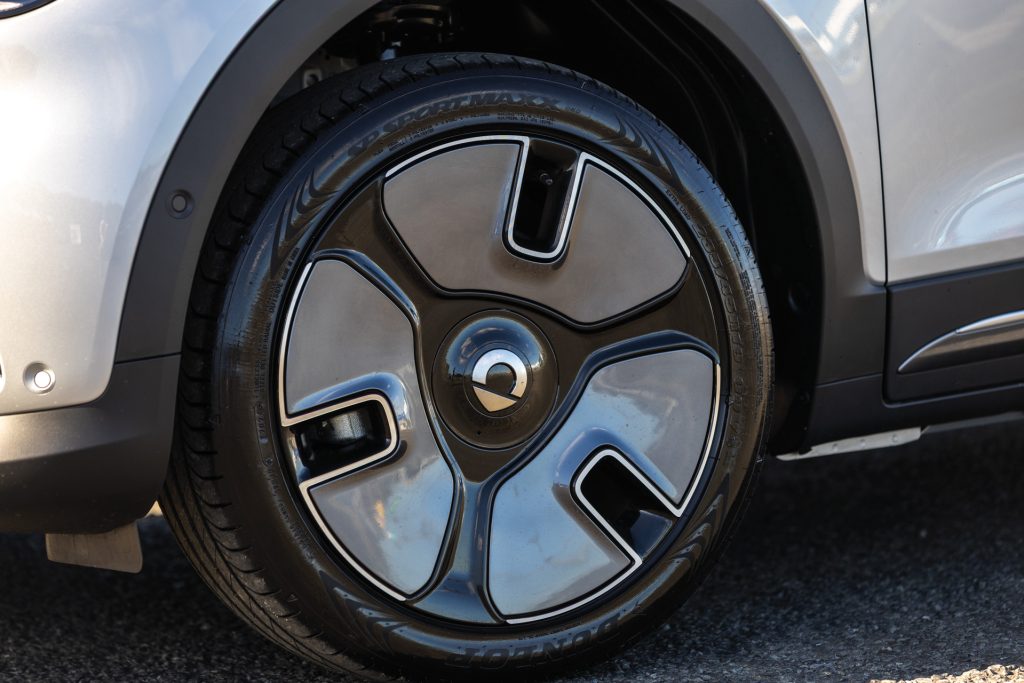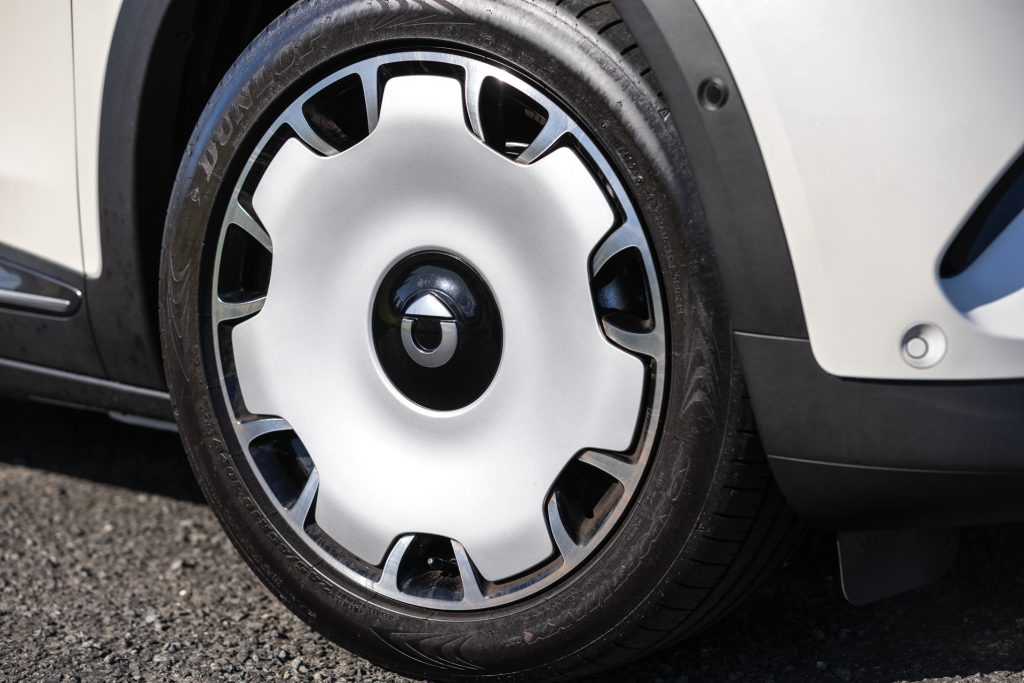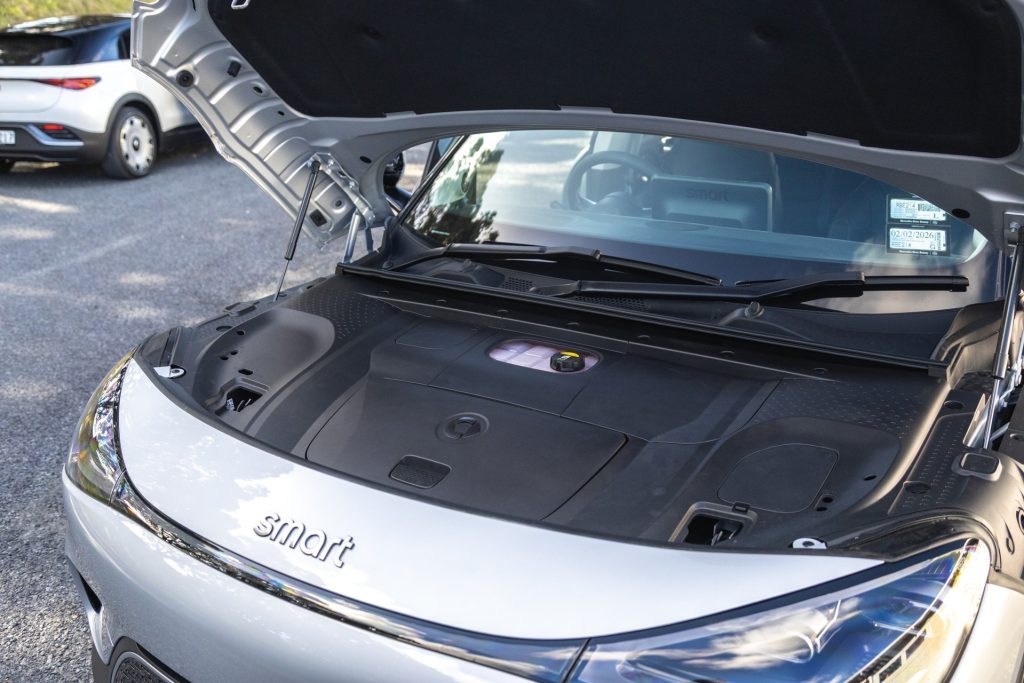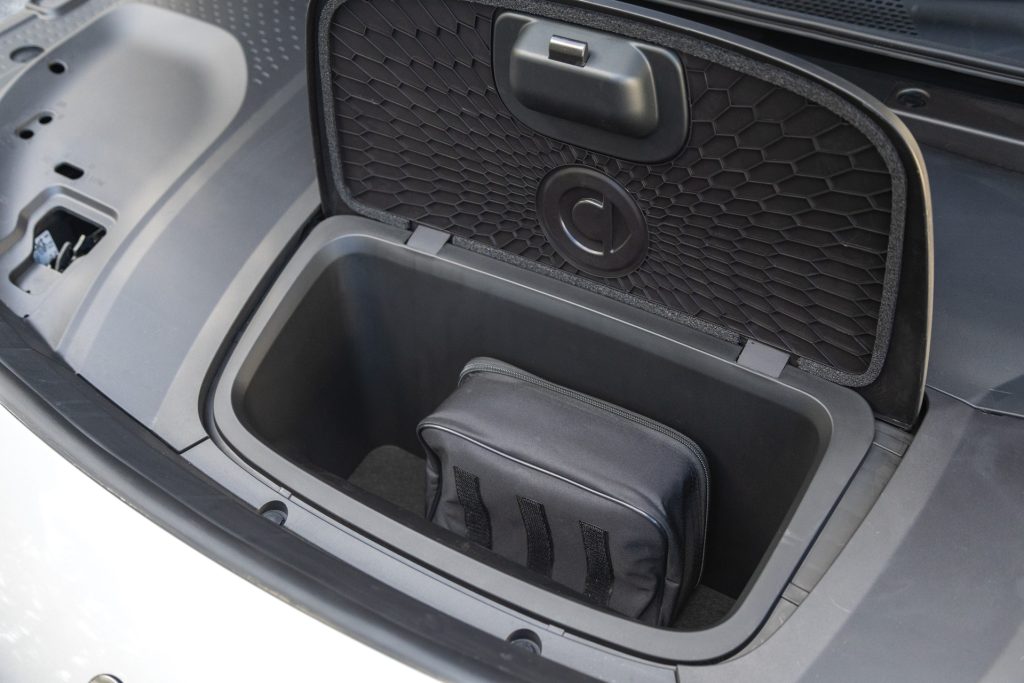2025 Smart #1 Premium & #3 Premium Review
Words: Richard Edwards | Photos: Alex Schultz
Smart is back, but not as you remember it. Here we check out both new entrants to the market, the #1 and #3.
Smart is back, and it’s not the pint-sized city runabout any more. Instead, we have a one-two punch of electric crossovers. There’s the cutesy Smart #1 and the swoopier Smart #3, both newly arrived in New Zealand. There’s at least one more coming, the #5, a mid- to large-sized SUV but we’ll leave that for later. Both are co-engineered by Mercedes-Benz and Geely, with the idea being that they blend European design with Chinese EV tech.
The names might be odd (there’s no #2), but the goal is clear: take on the booming compact EV segment with style and substance. After a first taste of the #1 Premium and #3 Premium, I’m happy to report that these siblings bring a refreshing mix of playful design, genuine tech cred and real driving chops to our roads. But how do they stack up against each other, and against rivals like the MG4 XPower, Cupra Born, or even Mercedes’ own GLA/EQA?
Design and Practicality
From a distance, the Smart #1 and #3 could almost be twins, until you notice the profiles. The Smart #1 is the “urban SUV” of the pair, chunky and cute, with a rounded front and upright stance. It wears a friendly face with oval LED headlights and a clamshell bonnet, while the rear features a full-width lightbar that cheekily resembles a baby Mercedes EQA.
By contrast, the Smart #3 is the swoopier SUV coupé. It’s longer and lower, trading some of the #1’s bubbly charm for a sleeker silhouette. It’s as if someone took the #1 and stretched it into a hot hatch shape. Both sport hidden pop-out door handles (not usually my favourite, but these work okay in practice, as I found) and frameless doors.
Both Smarts are compact. The #1 measures 4270mm long, whereas the #3 is slightly longer at 4400mm. That extra length (and a 35mm longer wheelbase) benefits the #3 mainly in the cargo area – the boot space expands from the #1’s compact 203 litres to a still-small 260L in the #3. Neither will swallow a family’s holiday luggage. To put it in perspective, a Cupra Born hatch holds around 385L. But the #3’s boot is at least useful for groceries or a couple of weekend bags. In both cars, the rear seats can slide forward to trade legroom for more cargo room, or fold mostly flat when you need extra space.
Climb inside, and you’ll be surprised at how airy these little EVs feel. The cabin design is near identical between #1 and #3, but headroom differs slightly due to those opposing roof profiles. The #1 Premium gets a large panoramic sunroof (with a power sunshade) that lets in plenty of light, whereas the #3’s “halo” glass roof stretches even wider across the cabin. As a result, the #3 feels just a tad airier in the back.
During my “giant human test” I found both cars surprisingly accommodating but the #3 offered a smidge more clearance above my head due to the wider glass panel, despite the lower roofline. Legroom is decent for this class; I could sit behind my own driving position in both, though in the #1 my knees brushed against the front seat back. Width is the limiting factor; don’t expect to fit three adults across the rear bench comfortably.
Smart’s Mercedes influence is evident in the cabin design. The dashboard has a flowing, modern style with metallic-look trim and turbine-inspired circular air vents. The Smart #1 Premium we tested featured a slightly more solid-feeling interior in some areas, whereas the #3 Premium had a different trim finish that looked cool but creaked a bit under pressure. Both cars have a mix of soft-touch surfaces up high and harder plastics down lower.
Smart does dress up the Premium trim with some genuine upgrades. There’s leather seat upholstery (versus cloth/leatherette in the base model) and snazzy LED ambient lighting strips that add a premium vibe at night. Both cars have power-adjustable front seats that are nicely shaped. The #3’s front buckets are a touch sportier with integrated headrests and I found them even more comfortable on longer drives.
Both cars come with a 12.8-inch central touchscreen and a 9.2-inch digital instrument cluster. The screens are crisp and packed with features. The centre display runs Smart’s own UI, though we noted similarities to those found in Lotus and Zeekr cars. It has cutesy graphics and menus that, once learned, are easy enough to navigate. One thing I appreciated is the physical bezel around the touchscreen. It sounds trivial but having a frame to rest your hand on helps stabilise your finger when tapping on the move.
Both Premium models are loaded with tech. Highlights include integrated Apple CarPlay and Android Auto (wireless connectivity) and an impressive Beats audio system with 13 speakers and a subwoofer.
Smart #1 and #3 both come with the expected ADAS (advanced driver assistance systems) as standard, and they work remarkably well. Adaptive cruise with Lane Centering and Traffic Jam Assist are smooth and reliable. The lane-keeping in particular is among the best I’ve tried – it centres confidently without the ping-pong wobble some systems exhibit and, crucially, it isn’t overly intrusive. The Smarts also read speed signs and can even automatically adjust your cruise speed. I rarely use such systems as they can be rather abrupt but this one isn’t.
There’s a wireless phone charger in the console, and multiple USB-C ports for device charging. Practical storage up front is decent – the centre console has an open bin beneath and a sliding cover over the cupholders. Both models have a powered tailgate (with a kick sensor on Premium) for easy access to that small boot.
Performance and Range
The #1 and #3 Premium share the same powertrain: a 66kWh (usable) lithium NMC battery hooked up to a rear-mounted electric motor. Peak output is a healthy 200kW with 343Nm of torque, which is more than enough oomph for cars of this size. In fact, that’s hot-hatch territory: by comparison, a VW Golf GTI makes about 180kW. On the road, the acceleration feels brisk; the #1 launches from 0-100 km/h in roughly 6.7 seconds. The slipperier #3 is quicker still: Smart quotes about 5.8 seconds 0-100km/h.
In real-world terms, both RWD Smarts feel punchy. There’s instant electric torque to scoot out of intersections, and plenty of midrange power for highway passes. Unless you simply must have a sub-four second 0–100 time, the single-motor versions are more than quick enough. Smart also offers Brabus dual-motor AWD variants with a whopping 315kW – those will rip 0-100 in about 3.7s, but that’s another story and another $10k+ on the sticker.
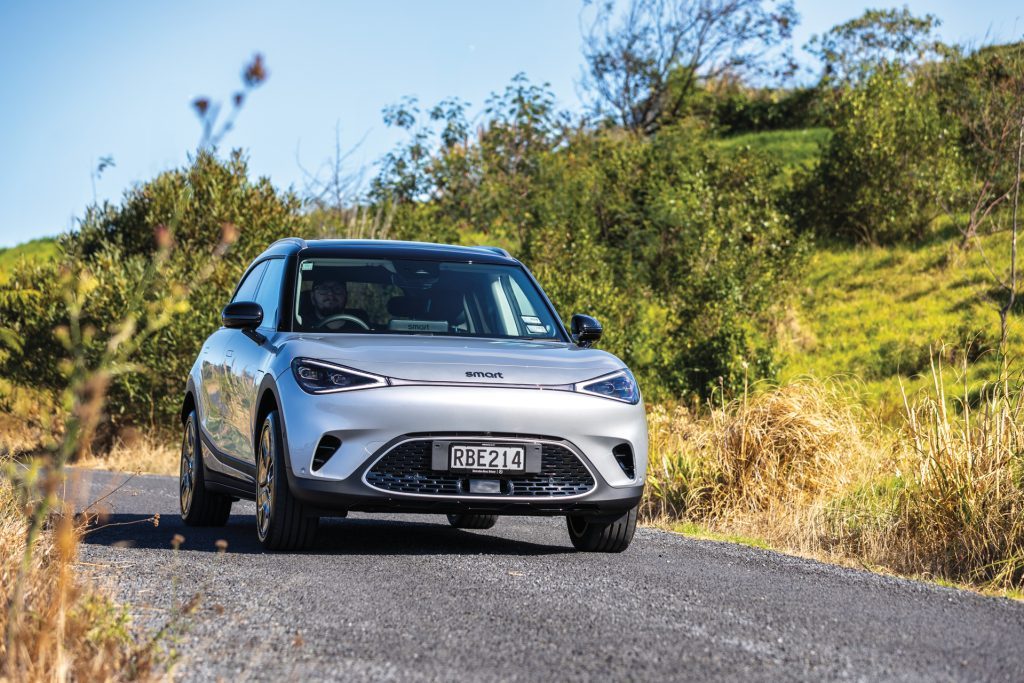
Both the #1 and #3 use that 66kWh NMC battery to good effect. Despite their small size, they’re not ultralight (the #1 Premium weighs 1800kg, #3 Premium 1810kg), but the efficiency is respectable. The official WLTP range is up to 440km for the #1 Premium and 455km for the #3 Premium. That slight difference likely comes down to aerodynamics and possibly tyre choices – the #3 cuts through air a bit better and recorded a marginally lower energy consumption in testing (around 16.3kWh/100 km versus ~16.8 for the #1). In practice, you’re looking at real-world 350–400 km on a charge for either car, depending on driving style.
Charging is another strong suit. There’s a CCS2 port supporting up to 150kW DC fast charging, so a 10–80 per cent top-up can take as little as 30 minutes under ideal conditions. All NZ-spec Premiums also include 22kW AC charging, which is rare in this class and very handy if you’ve got access to three-phase charging at home or work. The base Pro+ models stick with a more common 7.4 kW onboard charger.
On the road, both cars are surprisingly engaging to drive. With 200kW to the rear wheels, these Smarts can even be a bit tail-happy if you provoke them. The ESC isn’t overly intrusive; in Sport mode, you can actually get a hint of rear-wheel rotation on damp pavement before the electronics step in. Both cars are rear-drive, which contributes to their balanced feel in corners. Steering is a strong point: light at parking speeds but firming up nicely as you go. It’s quick and responsive, making the #1 feel nippy around town, true to the Smart brand’s city-car roots.
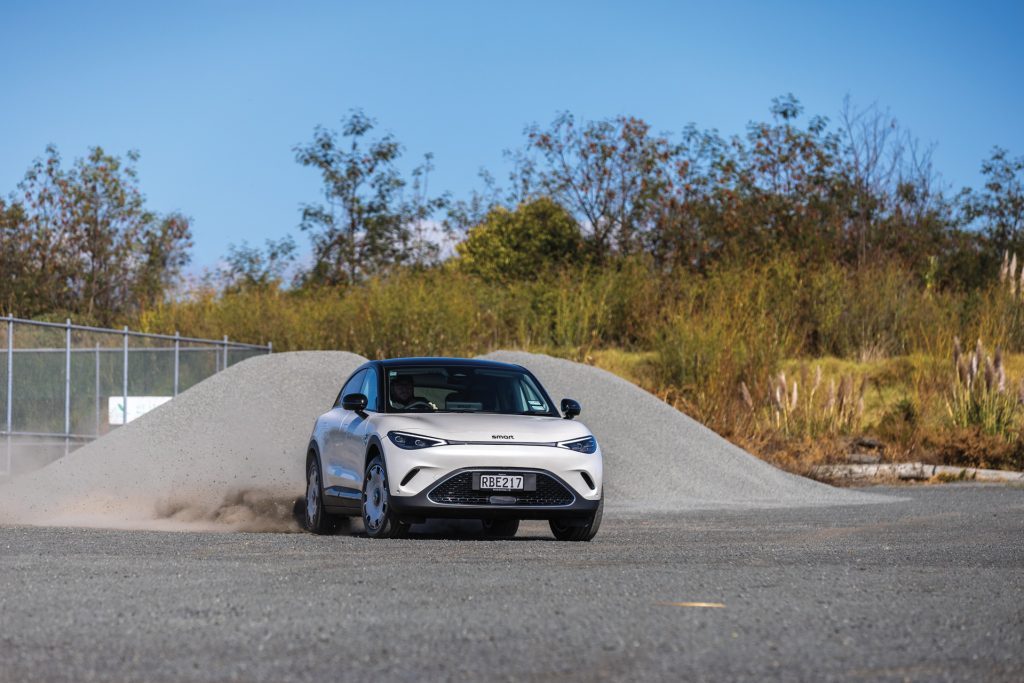
The #3, with its wider track and longer wheelbase, actually feels even more composed and confident when cornering at speed. Push it on a winding road and it hunkers down more like a hot hatch than an SUV, with great grip. In fact, the chassis tuning is genuinely impressive – there’s a dash of that driver’s car vibe, unexpected in a small electric crossover.
Credit likely goes to the Geely SEA platform they’re built on (shared with the likes of the Volvo EX30 and Zeekr X), which has its batteries down low and a well-sorted suspension set-up. For a high-riding EV, the Smart #3 might be one of the best handlers in its class.
Value and Verdict
Now for the big question: do these Smarts make sense in the NZ market, and which one should you pick? On price alone, Smart has come in higher than the mainstream, but lower than traditional luxury brands, effectively carving out a premium niche of its own. The Smart #1 Premium is priced at $69,990, and the Smart #3 Premium at $74,990 (before on-road costs). For the Pro+ models, subtract $5000.
That positions the #1 just above some mainstream options at list, and the #3 well below premium options. It’s also well below something like a Mercedes EQA (which starts around $92k). For your money, the Smarts come relatively fully loaded.
The biggest strengths of the Smart #1 and #3 are their blend of attributes. They give you zippy EV performance, usable range, and genuine style in a compact package that’s perfect for city dwellers. They also offer tech and features that outshine many competitors – the 22kW AC charging capability, for example, is rare and super-useful. The driving experience is another highlight; these cars are actually fun to drive, with tight handling that can put a grin on your face on a winding road.
No car is perfect. The Smarts’ main weaknesses boil down to space and perhaps brand perception. The limited boot capacity is the most obvious practical drawback.
When stacked against the MG4 XPower and Cupra Born, the Smarts hold their own. The MG undercuts on price and overwhelms with power but it can’t match the Smart’s interior finesse or tech. The Cupra Born is a closer fight: similar price, more range, very stylish, and backed by the Volkswagen Group. But the Cupra isn’t quite as quick, and its interior isn’t as feature-packed.
Mercedes GLA/EQA comparisons highlight the value of the Smart – a GLA 250 petrol or an EQA 250+ electric will cost you at least $15k–$20k more and yet come with similar or even fewer features.
Smart’s #1 and #3 Premium models are impressive debut acts for the brand’s return to NZ. They deliver an appealing mix of style, performance, and technology that feels well-suited to our market.
Personally, I find myself drawn to the Smart #3, its sleeker looks and marginally greater practicality win me over. If it were my money, I’d spend the few grand extra. That said, if you prioritise a smaller footprint and $5k saved, the #1 Premium won’t disappoint. Both prove that EVs can be chic yet sensible, fun yet efficient. A smart choice, then.
Smart #1 Premium
$69,990 / 16.8kWh/100km / 0g/km
0-100 km/h 6.7s (claimed)
Motor output 200kW
Max torque 343Nm
Battery 66.0kWh
Range 440km
Drivetrain Single-speed auto / RWD
Front suspension Mac strut / swaybar
Rear suspension Multilink / swaybar
Turning circle 11.0m (2.2 turns)
Front brakes Ventilated discs
Rear brakes Discs
Stability systems ABS, ESP, TV
Safety AEB, ACC, BSM, LDW, RCTA, ALK, AHB
Tyre size f/r-235/45R19
Wheelbase 2750mm
L/W/H 4270 / 1822 / 1636mm
Luggage capacity r-203L
Tow rating Not rated to tow
Service intervals 12 months / 20,000km
Warranty 5yrs / 150,000 km
ANCAP rating ★★★★★ (2022)
Weight (claimed) 1788kg
Smart #3 Premium
$74,990 / 16.3kWh/100km / 0g/km
0-100 km/h 5.8s (claimed)
Motor output 200kW
Max torque 343Nm
Battery 66.0kWh
Range 455km
Drivetrain Single-speed auto / RWD
Front suspension Mac strut / swaybar
Rear suspension Multilink / swaybar
Turning circle 11.0m (2.2 turns)
Front brakes Ventilated discs
Rear brakes Discs
Stability systems ABS, ESP, TV
Safety AEB, ACC, BSM, LDW, RCTA, ALK, AHB
Tyre size f/r-235/45R19
Wheelbase 2785mm
L/W/H 4400 / 1844 / 1556mm
Luggage capacity r-260L
Tow rating Not rated to tow
Service intervals 12 months / 20,000km
Warranty 5yrs / 150,000 km
ANCAP rating ★★★★★ (2023)
Weight (claimed) 1810kg



